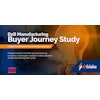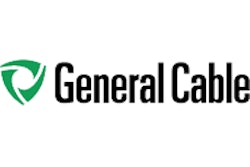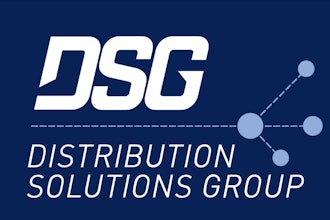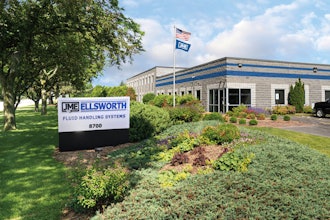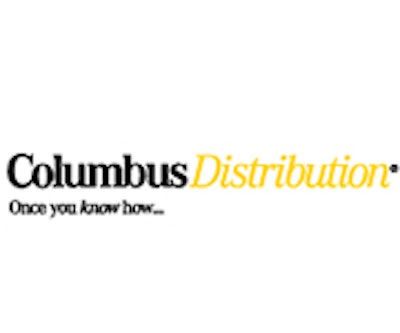
ENSURING RELIABLE INFORMATION
In many companies, managers and employees in the warehouse, logistics, and distribution teams as well as other business groups accomplish the impossible every day. In the absence of efficient, centralized systems and processes, they meet customer commitments, support growing numbers of orders and spiking workloads, moving goods in and out as quickly and accurately as they can. Executives try to take a strategic view in setting directions, often hampered by difficulties in accessing meaningful, up-to-date information to help them make the right decisions. Too often, obsolete, paper-based processes make it hard for workers to keep up with picking, packing, shipping, and goods-moving tasks. Mistakes and inaccuracies multiply the busier it gets, exposing the fulfillment of customer-service commitments to risk.
When a company wants to add a significant business activity, such as adding a new retail channel, these challenges are magnified, and managers handle too many escalations and problems. Innovative companies newly envision how they manage changes in their supply chain and business operations. They replace multiple, disconnected systems with a unified, simplified infrastructure that makes current, reliable business information available to all stakeholders. That same infrastructure also makes it possible to manage the great number of supply chain tasks for best impact on customer relationships.
CASE 4: Connected Information and Management Infrastructure
Issue: For years a retail company had distributed its products to its stores directly. Now, company leadership wanted to take advantage of the opportunity to sell through online channels and deliver directly to consumers. That strategy required a realistic planning effort, which turned out to be an extremely challenging task. The data to substantiate business decisions existed, but had to be extracted from multiple systems and repositories, raising questions about its accuracy and timeliness.
Problem: Executives and supply chain managers found it difficult to plan ahead, especially when they needed to consider the operational and fi nancial impact of an added sales channel. Even forecasting based on the current state of the operation was difficult without easy access to all the pertinent information. The managers of the warehouse, logistics, and distribution groups were also unsure whether their teams and processes had the necessary versatility to support the changes executives pursued.
Remedy: After a thorough review of the leading technology providers, the company decided to implement Microsoft Dynamics AX 2012 as its ERP system and extend it for all supply chain functions with ColumbusDistribution. ColumbusDistribution supports the delivery process of shipments to retail stores as well as to consumers directly. They meet the requirements of diff erentiated goods flows and can integrate with third-party materials handling equipment. In an integrated supply chain and business infrastructure, real-time, reliable data related to the warehouse, distribution, logistics, store and customer orders, and forecasting is directly available to the people who need it, depending on their roles. Newly flexible logistics support multiple retail channels, and a wide range of tools and capabilities in the Supply Chain Solutions facilitate accurate, efficient, and timely delivery to stores and directly to consumers.
Benefits: Logistics and supply chain managers today report accurately and in a timely manner on costs, inventory, inbound and outbound flows, resource utilization, and more. Equipped with this information, they also perform more meaningful planning of supply chain activities and prepare operations for change and growth. Using relevant, actionable data from the ERP system and Supply Chain Solutions, company executives conduct their own, more strategic planning with a high measure of confidence. Business managers in charge of directing the company’s growth are effectively making the transition into a more diverse retail environment after logistics, distribution, and the warehouse quickly adjusted to support and deliver to individual consumers as well as store locations. The company’s supply chain operations are successfully maintaining the high level of service quality customers expect, extending it to highly demanding consumers.
CASE 5: Customer Responsiveness
Issue: Delivering excellent service to all customers is the main priority for the company, because it has always been one of the strongest competitive differentiators. However, inefficiencies and errors in distribution, logistics, and warehouse operations eventually had enough of an impact to generate a low, yet increasing, volume of customer complaints. Leadership deemed this trend unacceptable.
Problem: Workers in logistics and the warehouse largely followed manual processes, with most documentation on paper. Such tasks as processing an increasing number of orders, often with many lines, took time and needed painstaking checking to ensure their correctness. Assignment of inventory to customer orders was at times undependable, resulting in outages and delays in customer deliveries. Managers were closely involved with day-to-day tasks at a granular level, checking paperwork and shipments for errors. They also spent signifi cant time helping their people work as efficiently as possible with the variety of stand-alone storage, handling, and packaging systems the company used. Most of the time, they were not able to prepare their teams and resources adequately to support fluctuating workloads.
Remedy: The company decided for a technology overhaul to bring its infrastructure and processes fully in line with service-level commitments. The IT group, implemented ColumbusDistribution integrated with Microsoft Dynamics AX 2012. Teams in the warehouse, fulfillment, shipping, handling, packaging and other operations quickly learned and started working with the new tools. Today, managers use Wave Planning and Task Management to prepare upcoming work and assign picking, packing, and shipping to the right resources. Warehouse workers at the Receipt Station efficiently align purchase orders and incoming goods. Through automated sales processing in Order Release Management, the warehouse receives shipment detail that conforms to the business’s delivery rules, which incorporate customer requirements. The Packing Station lets workers accurately consolidate, check, pack, label, and ship orders, using barcode scanning and touch-screen monitors. Technology and operations managers used Supply Chain Integration, which offers predefined templates, to connect the Supply Chain Solutions and the ERP system with suppliers using Electronic Data Interchange (EDI).
Benefits: The company quickly achieved a dramatic change in the customer experience. Customers report that they notice that the company now follows their preferences for processing orders and shipping goods more consistently and efficiently. Almost every time, shipments arrive on schedule, and errors are few and far. Stores also state that communications with the company are more reliable, setting the right expectations that let stores plan and forecast accurately in their local businesses. The company is still assessing the actual before-and-after diff erences in common workflows of receiving, put-away, picking, packing, and shipping, but workers throughout take less time to do their jobs. Managers only exceptionally pay attention to the smooth-running, efficient processes that take place now. Instead, they optimize their planning, anticipate high-workload periods, manage person hours with unprecedented eff ectiveness, and creatively find ways to serve customers even better.
CASE 6: Creating a Sustained RhythmIssue: With high-activity periods generating far more traffic and higher workloads than at other times, a company found it diffi cult to meet its own quality standards in getting orders to customers. Increasing customer returns and complaints clearly demonstrated problems. In addition, the costs of warehouse, distribution, and logistics operations rose faster than the company’s revenue. Because this was not sustainable, company leaders took a close look at the effectiveness of the resources and processes in their supply chain.
Problem: With many processes based on paper documentation and lacking strong guidance to maintain consistency and accuracy, warehouse and distribution workers made too many mistakes—especially when the company went through its seasonal spikes in customer orders. Managers and supervisors spent a large portion of their time checking the quality of employees’ work. Absorbed in operational details, they found it difficult to pursue the company’s goals for improving customer-service levels and helping their people become more productive.
Remedy: After implementing ColumbusDistribution and integrating it with Microsoft Dynamics AX 2012, the company began using the new tools to reduce the complexity and error potential, and increase the accuracy and consistency of warehouse, logistics, and distribution operations. For example, with Radio Frequency (RF) Picking, the company vastly simplified picking activities, eliminating most of the paper-based documentation workers previously used. Instead, they are picking from the screens on their mobile devices or forklift terminals. Inbound Cargo makes it possible to create one single cargo entity of different purchase or sales orders with multiple lines for easier identification and tracking.
Benefits: Today, logistics workers process even very complex orders with great efficiency, taking less time than they used to, and managers easily track all orders, cargo entities, and transports through the entire supply and value chain. Greater control and efficiency contribute to a sizeable reduction of the costs of order processing and transportation. In addition, because of wide-reaching automation and the elimination of paper, operations are now almost entirely free from errors. That makes it easier for the company to bring new workers into the business or outsource some tasks to vendors. Employees learn the new tools quickly; because of preset rules and more consistent processes, they execute on best practices with minimal assistance from managers. Managers, in turn, can more strategically strive for greater eff ectiveness of the teams and processes they are responsible for. Finally, customers generally receive their goods faster, and returns are a fraction of what they once were.




